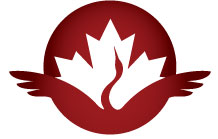 IN THE INTEREST OF FULL DISCLOSURE: As many of you may know, I have been involved with North Korea
IN THE INTEREST OF FULL DISCLOSURE: As many of you may know, I have been involved with North Korea n human rights issues with an organization called HanVoice (www.hanvoice.ca), which I helped found in 2007. Since then, HanVoice has grown into the largest non-profit in Canada dedicated to North Korean human rights issues.
n human rights issues with an organization called HanVoice (www.hanvoice.ca), which I helped found in 2007. Since then, HanVoice has grown into the largest non-profit in Canada dedicated to North Korean human rights issues.
When it comes to North Korean refugees, one of the key areas of need that we have identified is leadership. This is especially true for the North Korean community in South Korea, where most of these refugees ultimately settle. Despite more than a fifteen year presence within South Korea, very few North Koreans have emerged as leaders of their own community.
With a first-of-its-kind program designed to address these challenges, HanVoice is pleased to announce the launch of the HanVoice Pioneers Project. Inviting a bright future leader to Canada, this program is designed to impart upon this candidate the tools necessary to speak on behalf of the North Korean refugee community worldwide. This will include not only learning English, but taking advocacy classes and “walking the halls of power” by interning at a Member of Parliament’s office. Read the rest of this entry »






 On 22 May, the
On 22 May, the 



